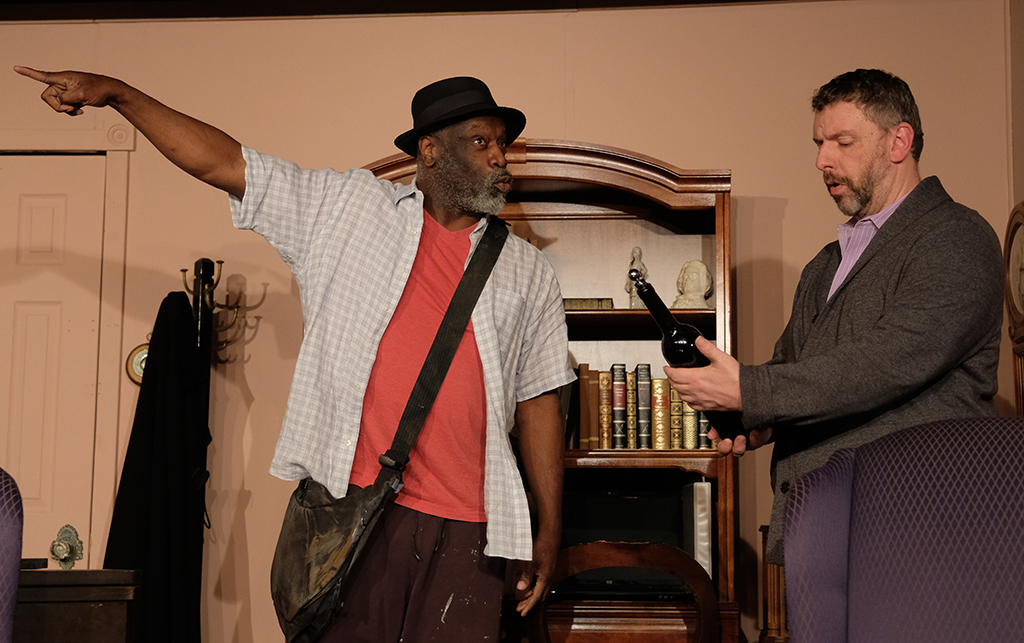
Voznesensky, the Russian poet, said when he was here that the landscape in this part of the country reminded him of his Sigulda*-that it was a “good microclimate” for writing. We listened at our ease at he responded to questions. He is a storyteller, a man with a marvelous memory, a simple man with a capacity for wonder, concerned with people and ideas.

Often a secret grin surfaced, as he reminisced. His tone and expression were serious, interested. He said that his study was also an excellent duck blind. We were startled-he smiled at our lack of composure. Then, quite casually, he picked up a rifle from the daybed and took a shot through the open louvers at a woodchuck that, scared but reprieved, scurried across the far slope. Miller adjusted a microphone he had hung crookedly from the arm of his desk lamp. This is all, except for a snapshot of Inge and Rebecca, thumbtacked to the wall. The room harbors a plain slab desk fashioned by the playwright, his chair, a rumpled gray day bed, another webbed chair from the thirties, and a bookshelf with half a dozen jacketless books. The electric light was on-he could not work by daylight, he confided. We walked up a green knoll to a spare single-roomed structure with small louvered windows. The author’s study was in total contrast. It held colorful modern rugs and sofas an antique rocker oversized black Eames chair a glass coffee table supporting a bright mobile small peasant figurines-souvenirs of a recent trip to Russia-unique Mexican candlesticks, and strange pottery animals atop a very old carved Spanish table, these last from their Paris apartment and plants, plants everywhere. The living room, glassed-in from the terrace, was eclectic, charming: white walls patterned with a Steinberg sketch, a splashy painting by neighbor Alexander Calder, posters of early Miller plays, photographs by Ms. Miller explained as we went in that the house was silent because his wife, photographer Inge Morath, had driven to Vermont to do a portrait of Bernard Malamud, and that their three-year-old daughter Rebecca was napping. We walked back past the banked iris, past the hammock, and entered the house by way of the terrace, which was guarded by a suspicious basset named Hugo. Carpentry, he said, was his oldest hobby-he had started at the age of five. He invited us in to judge his prowess: he was turning the barn into a guesthouse (partitions here, cedar closets there, shower over there … ). He welcomed us, a tall, rangy, good-looking man with a weathered face and sudden smile, a scholar-farmer in horn-rimmed glasses and high work shoes. We walked to its source, a stately red barn, and there found the playwright, hammer in hand, standing in dim light, amid lumber, tools, and plumbing equipment. The only sound was a rhythmic hammering echoing from the other side of the hill. Most of them were flowering as we approached his house for our interview in spring 1966. His house is surrounded by the trees he has raised-native dogwood, exotic katsura, Chinese scholar, tulip, and locust. The author, brought up in Brooklyn and Harlem, is now a county man.

Interviewed by Olga Carlisle & Rose Styron Issue 38, Summer 1966Īrthur Miller’s white farmhouse is set high on the border of the roller-coaster hills of Roxbury and Woodbury, in Connecticut’s Litchfield County.


 0 kommentar(er)
0 kommentar(er)
